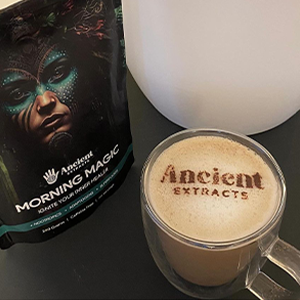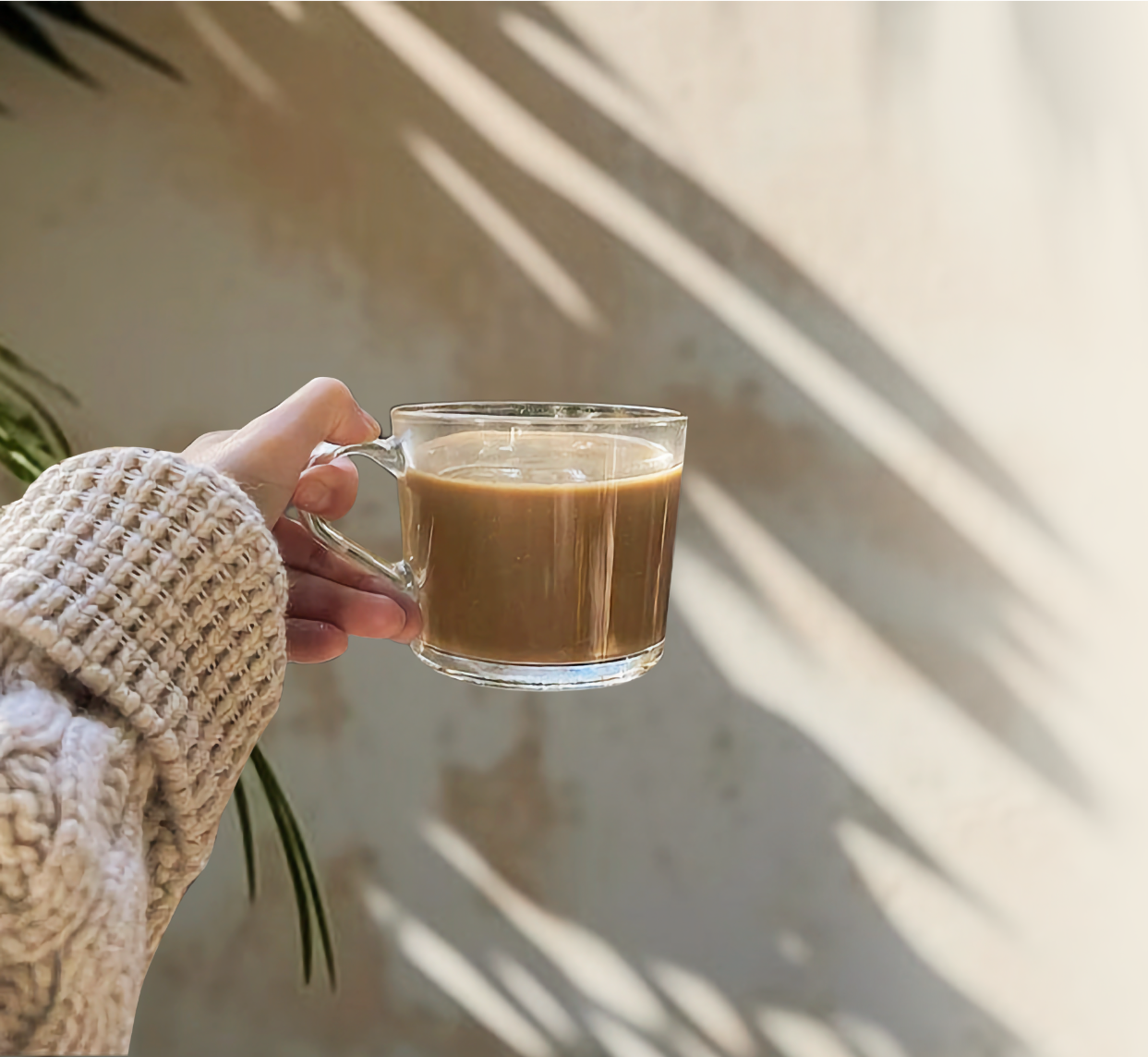Buy your weekday smoothies and get your weekend ones for free. (7 for the price of 5!)

Pure Extracts vs. Natural Extracts: What’s the Real Difference?
OVERVIEW
Pure extracts come from a single named source (e.g., vanilla bean, peppermint leaf, reishi fruiting body) using water, alcohol, CO₂, or a dual process with no added flavors or carriers—so the composition reflects the original plant or fungus. Natural extracts also originate from nature but can include carriers (glycerin, oils), natural flavors, emulsifiers, or multi-source blends; “natural” does not automatically mean “pure.”
This guide clarifies the difference between pure and natural extracts, how extraction methods change potency and taste, how to read labels (solvent, ratio, plant/fungal part), and a buyer’s checklist and FAQs to help you choose the right option for flavor or function.
TABLE OF CONTENTS
- Why This Distinction Matters
- Key Definitions
- Deep Comparison Table
- Chemistry 101: What Each Extraction Method Pulls
- Ratios, Strength, and Standardization
- Flavor vs. Function: Setting the Right Goal
- Reading Labels Without Getting Fooled
- Regulatory & Safety Notes (Plain English)
- Examples You Can Picture
- Buyer’s Decision Framework
- Buyer’s Checklist (Copy-Paste)
- FAQs
- Suggested Meta & On-Page SEO
- Conclusion
Why This Distinction Matters
Natural and pure are not synonyms. Natural refers to origin (from nature), while pure refers to composition (one named source plus solvent, no added flavors/carriers). The difference changes how you evaluate labels, compare potency, decide on dosage, and pick a product for flavor or function.
- Functional outcomes: If you want specific actives (beta-glucans, triterpenes, flavonoids, alkaloids), extraction method, plant/fungal part, ratio, and standardization matter more than the word “natural.”
- Culinary outcomes: If you need predictable flavor and easy mixing, natural extracts with carriers provide consistency, solubility, and mouthfeel.
- Cost & scaling: Natural extracts often scale better; pure extracts depend on single-source inputs and can vary with harvest and terroir.
- Transparency: Pure extracts usually list species and part; natural extracts emphasize format and sensory performance. Both can be excellent with good labeling and testing.
Key Definitions
Pure Extracts
- Derived from one named source (vanilla bean, peppermint leaf, citrus peel, turmeric rhizome, or a mushroom fruiting body like reishi or lion’s mane).
- Solvents: water, ethanol/alcohol, both (dual extraction), or CO₂. Final product contains only extracted compounds and safe residual solvent levels.
- Exclude: added flavors (even natural), extra botanicals, carriers (glycerin/oils) unless part of the process and clearly disclosed.
- Forms: Full-spectrum (broad native compounds) and Standardized (targeted markers—e.g., % polysaccharides, % triterpenes—still single-source).
Bottom line: “Pure” = composition & identity clarity; one source, minimal extras.
Natural Extracts
- Natural origin but may include carriers (glycerin, MCT, oils), natural flavors, emulsifiers, or multi-source blends engineered for stable taste/aroma and solubility.
- Purpose: scale, consistency, and user-friendly formats (alcohol-free, oil-dispersible, emulsified).
- Label nuance: “Natural” signals origin, not purity; “natural flavor” may blend compounds from multiple botanicals to reproduce a target flavor.
Bottom line: “Natural” = origin & format; not necessarily minimal or single-source.
Deep Comparison Table
| Feature | Pure Extracts | Natural Extracts |
|---|---|---|
| Source | Single named ingredient (e.g., vanilla bean, reishi fruiting body) | Natural origin; may include carriers or multi-source blends |
| Additives | None beyond the extraction solvent | Glycerin, oils, emulsifiers, natural flavors allowed |
| Consistency | Harvest/terroir variation; steadier if standardized | Typically more consistent due to carriers/blending |
| Label Clarity | Often lists species, part, solvent, ratio | May list a flavor or blend; exact part may be omitted |
| Primary Use | Authentic culinary use; tinctures; functional supplements | Beverages, confections, gummies; ready-to-use formats |
| Perception | “Closer to the source,” minimal ingredients | “Natural origin,” format-friendly and predictable |
| Cost & Scale | Often higher; constrained by single-source supply | Often lower; easier to scale consistently |
| Best Fit | When actives or authenticity matter most | When flavor consistency, solubility, and mouthfeel matter most |
Chemistry 101: What Each Extraction Method Pulls
Water Extraction (Infusions & Decoctions)
- Pulls: hydrophilic compounds—polysaccharides, glycosides, some flavonoids, minerals, tannins.
- Used for: traditional teas; mushrooms like reishi/chaga where polysaccharides are desired.
- Strengths: simple, safe, time-tested.
- Limit: poor at lipophilic compounds (terpenes, many alkaloids, essential oils).
Alcohol Extraction (Tinctures)
- Pulls: ethanol-soluble/lipophilic compounds—terpenes, alkaloids, phenolics, essential oils.
- Used for: aromatics (peppermint, rosemary), resins, lipophilic fractions of fungi.
- Strengths: captures aromatic/bitter actives; shelf-stable.
- Limit: not ideal for those avoiding alcohol; misses water-only actives.
Dual Extraction (Water + Alcohol)
- What: water and alcohol extractions combined.
- Why: broader coverage of hydrophilic and lipophilic compounds.
- Where it shines: functional mushrooms (reishi, lion’s mane, chaga) and complex botanicals.
CO₂ Extraction (Supercritical)
- Pulls: volatile oils and certain lipophilic compounds.
- Used for: spices, aromatics, hops; clean profiles.
- Note: narrower spectrum unless paired with water/alcohol steps.
Ratios, Strength, and Standardization
Extract Ratio (Dry Extracts)
-
Example:
10:1= 10 kg raw → 1 kg extract. - Reality: Higher ratio suggests concentration but not guaranteed potency; solvent fit and input quality decide results.
Tincture Strength (Liquid Extracts)
-
Example:
1:5= 1 part herb : 5 parts solvent (w/v). -
Tip: Don’t compare
1:5tinctures to10:1dry extracts; compare like with like.
Standardization
- Goal: declare a marker level (e.g., % polysaccharides, % triterpenes, % flavonoids, % fulvic acid).
- Pro: dose predictability; Con: a single marker never describes the whole spectrum.
Practical tip: Evaluate both mg extract per serving and the % marker—that tells you how much and of what.
Flavor vs. Function: Setting the Right Goal
Choose Pure Extracts When…
- You need a clear link between label and bioactive compounds.
- You want authentic culinary character (pure vanilla; true citrus peel).
- You prefer minimal ingredients and traceability (species, part, method, ratio).
- You accept harvest variation or pick standardized pure to reduce drift.
Choose Natural Extracts When…
- You want consistent flavor over many batches.
- You need alcohol-free or oil-dispersible formats (glycerites, emulsified flavors).
- You prioritize taste, solubility, and mouthfeel over maximum functional payload.
Rule of thumb: Pure is for identity and actives; Natural is for format and flavor reliability.
Reading Labels Without Getting Fooled
- Named Source: Prefer “Vanilla bean extract,” “Reishi fruiting body extract,” “Lion’s Mane fruiting body dual extract.”
- Plant/Fungal Part: fruiting body vs. mycelium; leaf vs. root; seed vs. peel; bark vs. leaf.
-
Solvent & Ratio: water, alcohol, dual, CO₂; ratios (
10:1) or strengths (1:5)—compare within the same category. - Additives: glycerin, oils, emulsifiers, “natural flavors” → leaning toward natural extract (not pure).
- Testing: COAs, heavy-metal screens, microbials, and markers (e.g., beta-glucans for mushrooms, triterpenes, flavonoids, fulvic acid).
Regulatory & Safety Notes (Plain English)
- Allergens: Pure almond extract implies nut exposure; “natural almond flavor” may use benzaldehyde from apricot kernels/peach pits—natural but not almond.
- Residual solvents: Water/ethanol are common; responsible producers keep residues within safe limits and disclose.
- Heavy metals & microbes: Roots, barks, fungi, resinous materials can accumulate contaminants—choose brands with COAs.
- Stability: Alcohol tinctures are stable; water-based extracts may need preservatives or refrigeration; oil-rich extracts can oxidize—store cool and sealed.
- Interactions: Herbs/fungi can interact with medications; consult a professional if pregnant, breastfeeding, or on treatment.
Examples You Can Picture
Pure Vanilla Extract
- Made with: alcohol + vanilla beans.
- Why “pure”: single named source; no added flavors.
- Expect: authentic complexity; legal definitions often set minimum vanilla content.
Natural Almond Flavor
- Made with: benzaldehyde sourced from apricot kernels or peach pits.
- Why “natural,” not “pure almond”: origin is natural but not from almonds; engineered to imitate almond aroma.
- Implication: consistent taste; different allergen profile than true almond.
Functional Mushrooms (Reishi Example)
- Pure reishi dual extract: names fruiting body + water/alcohol; often declares % beta-glucans and/or % triterpenes.
- Mushroom “natural flavor”: made for umami in foods—not a substitute for functional actives.
Buyer’s Decision Framework
- Main goal: Flavor → natural extract. Function → pure extract (often dual), clear part and markers.
- Compound families: Polysaccharides/minerals → water; terpenes/alkaloids/phenolics → alcohol/CO₂; both → dual extraction.
- Format: Alcohol-free → glycerite/water-based; oil-friendly foods → oil-dispersible; capsules/tinctures → pure or standardized with mg/% markers.
- Variability tolerance: Low → standardized pure or natural blends. Some ok → full-spectrum pure.
FAQs
Is “natural” the same as “pure”?
No. Natural = origin (from nature). Pure = composition (one named source + solvent; no added flavors/carriers).
Are pure extracts always stronger?
Not automatically. Potency depends on extract ratio, solvent fit, raw quality, and standardization. Natural flavors can taste strong while offering fewer functional actives.
What’s dual extraction?
Water + alcohol extractions combined to cover hydrophilic and lipophilic compounds—common for functional mushrooms (reishi, lion’s mane, chaga).
How do I compare a 10:1 extract to a 1:5 tincture?
You generally can’t; they’re different systems. Compare mg per serving and any declared marker %.
Are carriers like glycerin a problem?
No. They improve palatability and solubility; their presence indicates a natural extract format rather than a pure one.
Do I need to worry about contaminants?
Choose brands with COAs (identity + heavy metals, microbials, residual solvents where relevant).
Why do some pure extracts vary in taste?
Harvest and terroir. Standardized pure extracts reduce variability but may emphasize certain markers over broader nuance.
Conclusion
Pure and natural optimize for different outcomes. Pure extracts prioritize identity clarity and minimal composition ideal for authentic culinary use and functional applications tied to plant/fungal part and solvent choice. Natural extracts prioritize format, taste consistency, and ease of use, often incorporating carriers or blends for reliable sensory performance. Decide first whether your goal is flavor or function; then choose the extraction method, ratio, and labeling transparency that match your needs.



